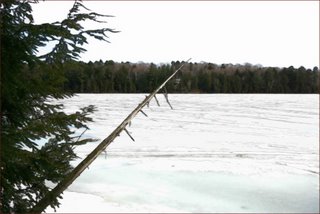4 fly-fishing hot spots
NEW YORK (FORTUNE) - There are plenty of fish in the sea - and in the rivers and lakes and streams. And you may have dusted off your fly-fishing pole recently in anticipation of catching some of them this summer.
But before you book a flight or pack your gear, you need some hard data. After all, this isn't like booking a trip to the beach."If you go to Alaska for king salmon in August or September, they're all gone," says legendary flyfisherman Lefty Kreh, who has taught angling techniques for the past 50 years. "What might be a very good place to fish in the morning, could be worthless in the afternoon."
And no matter where you're headed, one good way to get the inside track on fish is to contact good fly shops in the area and then hire a guide once you get there.
"A guide knows the local tides and whether bait fish are concentrated somewhere," says Kreh. To help you plan your summer getaway, we asked Kreh for his top picks on where to flyfish this summer.
Check these places:
1. Manitoba's North Seal River System
2. Narragansett Bay, Rhode Island
3. Los Roques, Venezuela
4.Central Pennsylvania
Source: news.google.com

